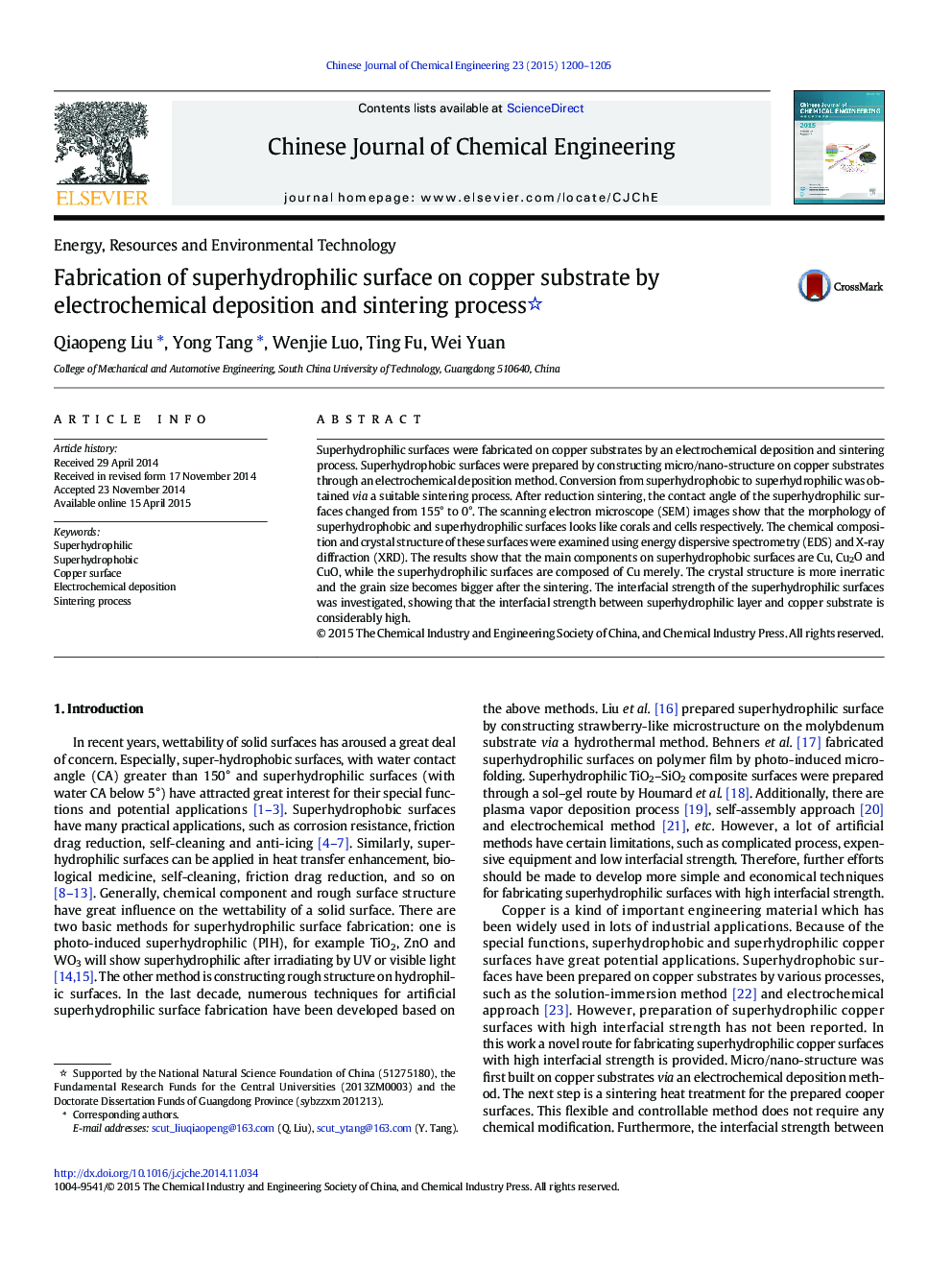| Article ID | Journal | Published Year | Pages | File Type |
|---|---|---|---|---|
| 167109 | Chinese Journal of Chemical Engineering | 2015 | 6 Pages |
Superhydrophilic surfaces were fabricated on copper substrates by an electrochemical deposition and sintering process. Superhydrophobic surfaces were prepared by constructing micro/nano-structure on copper substrates through an electrochemical deposition method. Conversion from superhydrophobic to superhydrophilic was obtained via a suitable sintering process. After reduction sintering, the contact angle of the superhydrophilic surfaces changed from 155° to 0°. The scanning electron microscope (SEM) images show that the morphology of superhydrophobic and superhydrophilic surfaces looks like corals and cells respectively. The chemical composition and crystal structure of these surfaces were examined using energy dispersive spectrometry (EDS) and X-ray diffraction (XRD). The results show that the main components on superhydrophobic surfaces are Cu, Cu2O and CuO, while the superhydrophilic surfaces are composed of Cu merely. The crystal structure is more inerratic and the grain size becomes bigger after the sintering. The interfacial strength of the superhydrophilic surfaces was investigated, showing that the interfacial strength between superhydrophilic layer and copper substrate is considerably high.
Graphical abstractIn this study, superhydrophobic surfaces were prepared by constructing micro/nano-structure on copper substrates through an electrochemical deposition method. Conversion from superhydrophobic to superhydrophilic was obtained via a suitable sintering process, after which the values of contact angle changed from 155° to 0°. The SEM images show the morphology of superhydrophobic and superhydrophilic surfaces which looks like corals and cells respectively. According to the results of EDS and XRD, the chemical composition and crystal structure have great differences between the superhydrophobic and superhydrophilic surfaces. The interfacial strength of superhydrophilic surfaces was proved considerably high by a flexible experiment.Figure optionsDownload full-size imageDownload as PowerPoint slide
